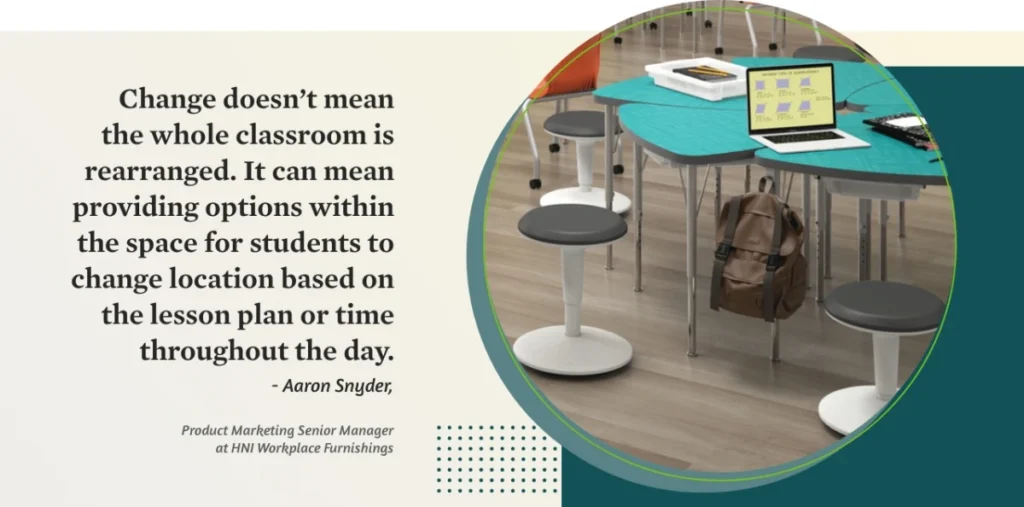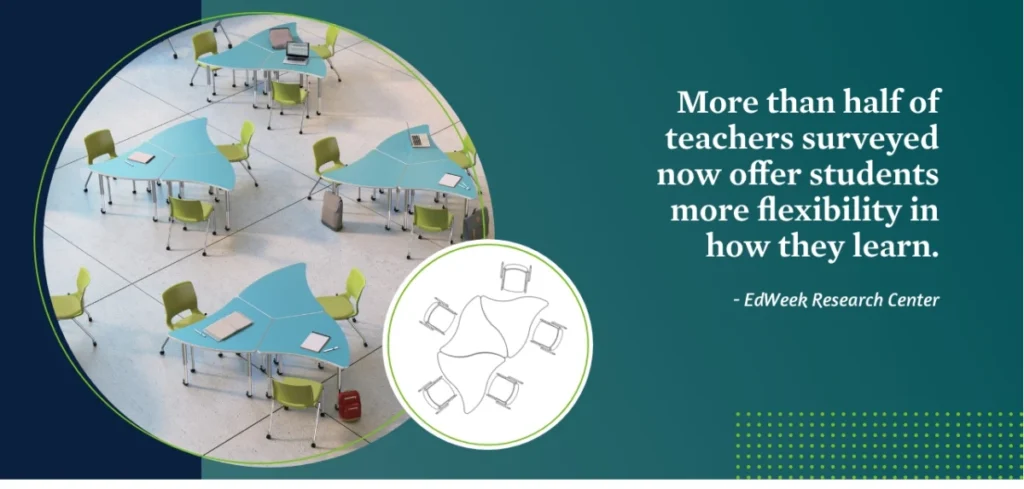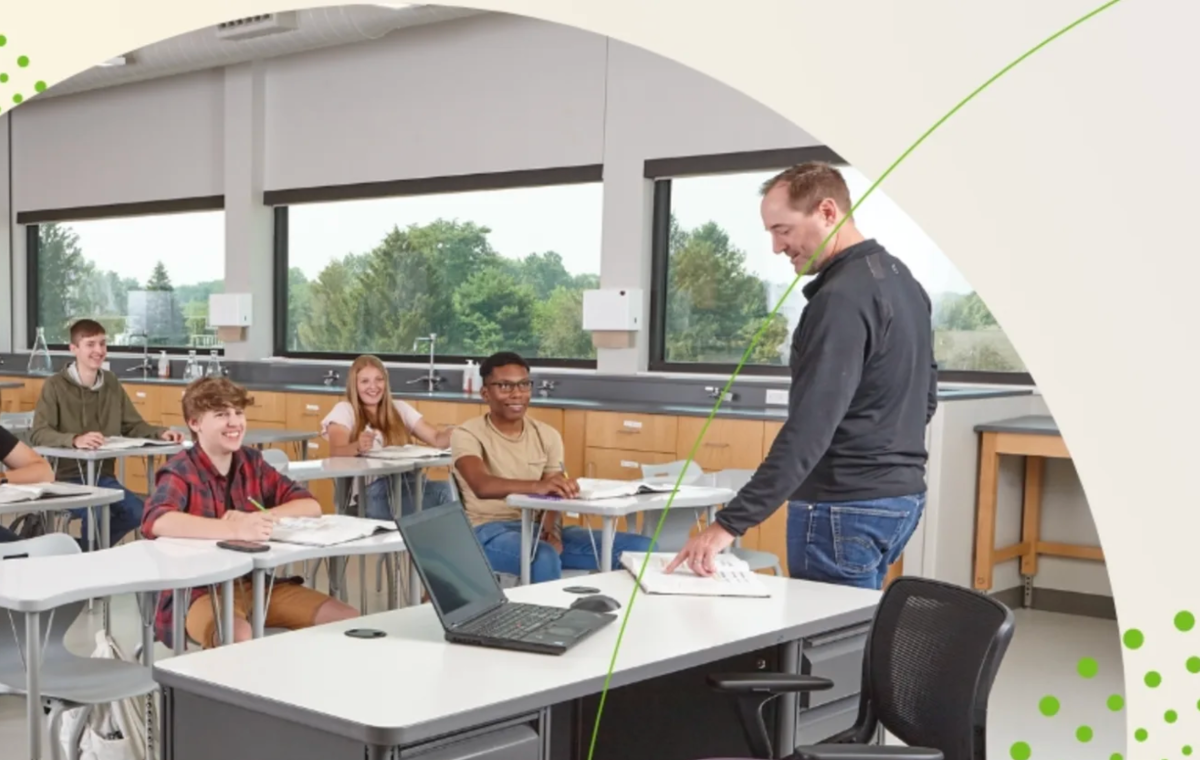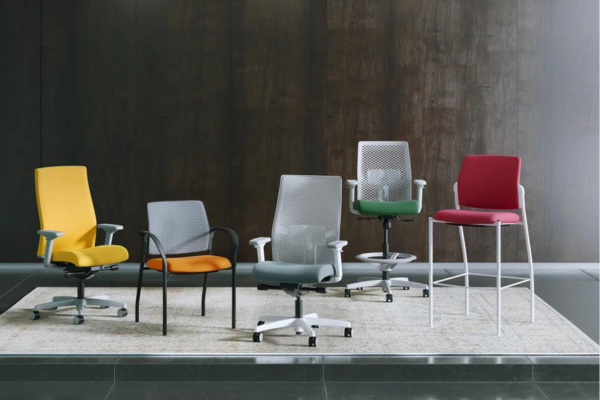Summer students aren’t the only ones cracking the books right now. Educators and administrators are reflecting on the last school year and making decisions for the one ahead.
Classroom instruction has evolved more in the past four years than in the decades that preceded it. Yet the adoption of virtual learning during the pandemic also revealed the undeniable advantages and versatility of in-person instruction—and opportunities to improve it.
In HON’s estimation, there are at least three key considerations for designing an educational environment that serves the emerging needs of students and the demands of school districts planning for a more dynamic future.
Routine Is Out
Classrooms have become boundless centers of learning, connecting students to technologies that cross borders and break down barriers. Though their curiosity may be limitless, their spaces have often remained confined.
“I feel the trend of sitting at your desk all day long is gone,” notes Aaron Snyder, Product Marketing Senior Manager at HNI Workplace Furnishings. “Change doesn’t mean the whole classroom is rearranged. It can mean providing options within the space for students to change location based on the lesson plan or time throughout the day.”
One approach Snyder recommends is to think of desks as a shared, horizontal workspace with endless possibilities. Options like HON’s Build™ series of tables and desks, available in dozens of shapes and colors, can be easily grouped or moved to the room’s perimeter to instantly create a central space.

Flexibility Is In
Rigid classroom arrangements may reinforce order, but perhaps at a hidden cost. Flexibility is difficult to define and even harder to study. Yet, according to a nationally representative survey of teachers administered by the EdWeek Research Center, more than half of teachers now offer students more flexibility in how they choose to complete assignments, more opportunities to revise and re-submit their work, and more ways to participate non-verbally in class discussions.
What’s more, 67% of teachers said they increased the degree to which they encourage non-verbal class participation. This change in flexibility of participation is crucial in addressing the needs of English-as-a- Second-Language students and other historically marginalized student groups.
“Flexibility can present itself in many ways, including making better use of space with a building that may be 20 or 30 years old,” explains Snyder. “We develop products that enhance new builds, but also remain extremely versatile within existing classroom floor plans.”

Discover What’s Possible
Envisioning the classroom of the future isn’t easy. That’s why HON created the 21st Century School, a virtual education space where stakeholders can see how their new rooms might look. Along with our recently updated education catalog, it helps educators explore additional furnishings and floor plans, and compare products to choose those that best serve their specific needs.
From webinars offering industry insights and expertise to immersive, virtual reality tours of various school settings and learning environments, HON offers education solutions that provide an innovative approach to informed decision making for any district or budget.
“HON helps our customers find the right balance of price point and function, simplifying the selection process by increasing confidence and reducing purchasing confusion” explains Snyder. “HON offers value price points, as well as durability, comfort and style. We’re really focused on leading change through furniture. We want the collections and packages we create to serve the needs of an everchanging education environment.”






